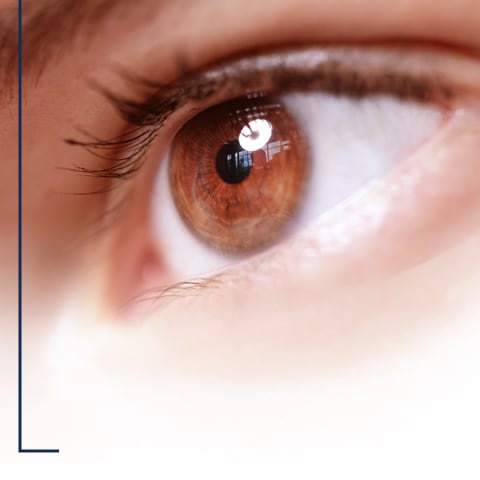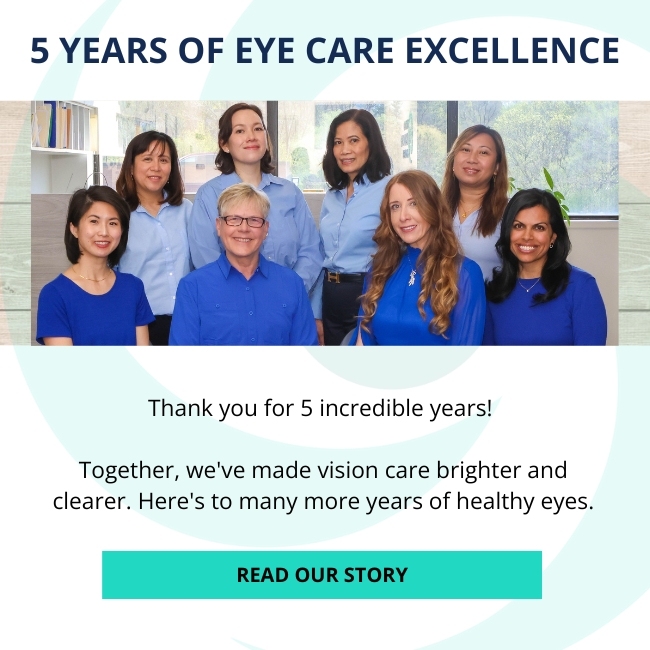In the ever-evolving landscape of medical advancements, platelet-rich plasma (PRP) drops have become notoriously popular for their ability to help heal. Its use in various medical fields, from aesthetics to orthopedics to dentistry, has gained significant momentum, including its application in optometry and ophthalmology.
How Does It Work?
PRP drops are derived from your own blood and composed of inactive platelets, bioactive proteins, and plasma. The platelets contain various natural growth factors, while the plasma acts to stabilize the function of platelets.
Platelets are typically one of the first cells to arrive at the site of injury. They are responsible for clotting, carry growth factors that aid with tissue repair, and play a crucial role in the body’s natural healing process. The bioactive proteins help regulate inflammation and support tissue healing.
PRP drops are similar to our natural tears in composition, pH, and osmolarity. Unlike conventional lubricating eye drops, PRP drops do not contain preservatives, stabilizers, or additives; instead, they mimic the properties of natural tears, including their anti-inflammatory and anti-microbial activities. PRP eye drops are personalized for you.
With their remarkable healing and anti-inflammatory properties, PRP drops have shown promising results in addressing severe dry eye, particularly in cases where the cornea is damaged or shows signs of inflammation.
How Are PRP Eye Drops Prepared?
We have all the equipment needed to prepare your PRP eye drops in-house, meaning you will receive your personalized PRP eye drops during your appointment time.
Our expert team works to provide a seamless experience from start to finish and minimize your wait time. Here is what you can expect:
- Blood collection: During your visit, we will draw a small blood sample (about 100 mL) in our clinic. This is a simple and quick procedure performed by our experienced team.
- Anticoagulant addition: To prevent blood clotting and premature platelet activation, we add sodium citrate, an anticoagulant, to the collected sample to protect the integrity of the PRP.
- Centrifugation: The sample is then carefully centrifuged to separate the different components of the blood based on their densities. This process allows us to isolate the platelet-rich plasma.
- Quality assurance: Throughout the manufacturing process, we take additional measures to ensure the highest safety and quality standards and prevent contamination.
This process takes about 45 minutes in total.
How Do You Use PRP Drops?
PRP drops are typically applied 4–6 times a day for 3 months to allow the therapeutic effects of the drops to take full effect. After this initial period, the frequency of usage can be personalized based on your progress.
We generally draw 100 mL of blood during your initial visit, which provides about 3 month’s supply of PRP drops.
To help maintain their effectiveness, store your drops in the refrigerator for the duration of use.
Who Is Eligible for PRP?
PRP drops have been proven effective for treating various eye conditions, including but not limited to:
- Dry eye
- Persistent epithelial defects
- Chemical burns
- Graft-versus-host disease
- Corneal ulcers
However, eligibility for PRP drops may vary depending on your individual factors and specific needs.
Who Is Not Eligible for PRP?
Unfortunately, some individuals may not be eligible for PRP drops due to specific circumstances. These include:
- Age: PRP drops are generally not recommended for those under 18 as the safety and efficacy in pediatric populations have yet to be extensively studied.
- Blood disorders: If you have blood disorders (dyscrasias), such as abnormal blood cell counts, you may not be eligible for PRP drops. These conditions can affect the effectiveness and safety of the treatment.
- Pregnancy: Due to the lack of clinical studies on the use of PRP drops during pregnancy, it is typically advised to avoid this treatment while pregnant.
- Clotting disorders: If you have any clotting disorders, such as a bleeding disorder or are on anticoagulant medication, PRP drops may not be suitable for you. These conditions can affect the ability of the PRP to function correctly.
- Active eye infections: If you have an active eye infection, it must be addressed before considering PRP drops. Treating the infection is critical to minimize complications.
- Glaucoma: Patients with glaucoma are generally contraindicated for PRP drops as glaucoma requires specific management and treatment strategies.
Do PRP Eye Drops Actually Work?
PRP drops have shown promising effectiveness in treating dry eye disease, and several studies have reported positive outcomes of symptom improvement. Some key findings include:
- A 2022 study measured subjective patient improvement using the Ocular Surface Disease Index (OSDI) scores. The results showed a statistically significant decrease in dry eye symptoms among the analyzed patients.
- A retrospective case series study conducted from November 2020 to November 2021 reported significant improvement in symptoms among patients who received PRP drops. Objective measures such as tear breakup time, conjunctival injection, and tear meniscus height also showed improvement after 4 weeks of treatment.
Although these findings indicate that PRP drops can be effective in reducing dry eye symptoms, individual responses may vary.
Find Dry Eye Relief with Toronto Medical Eye Associates
If you are seeking dry eye relief and want to explore PRP drops as an option, contact us at Toronto Medical Eye Associates. Our dedicated team is here to help you find personalized approaches to managing your uncomfortable symptoms and finding you the relief you deserve.









